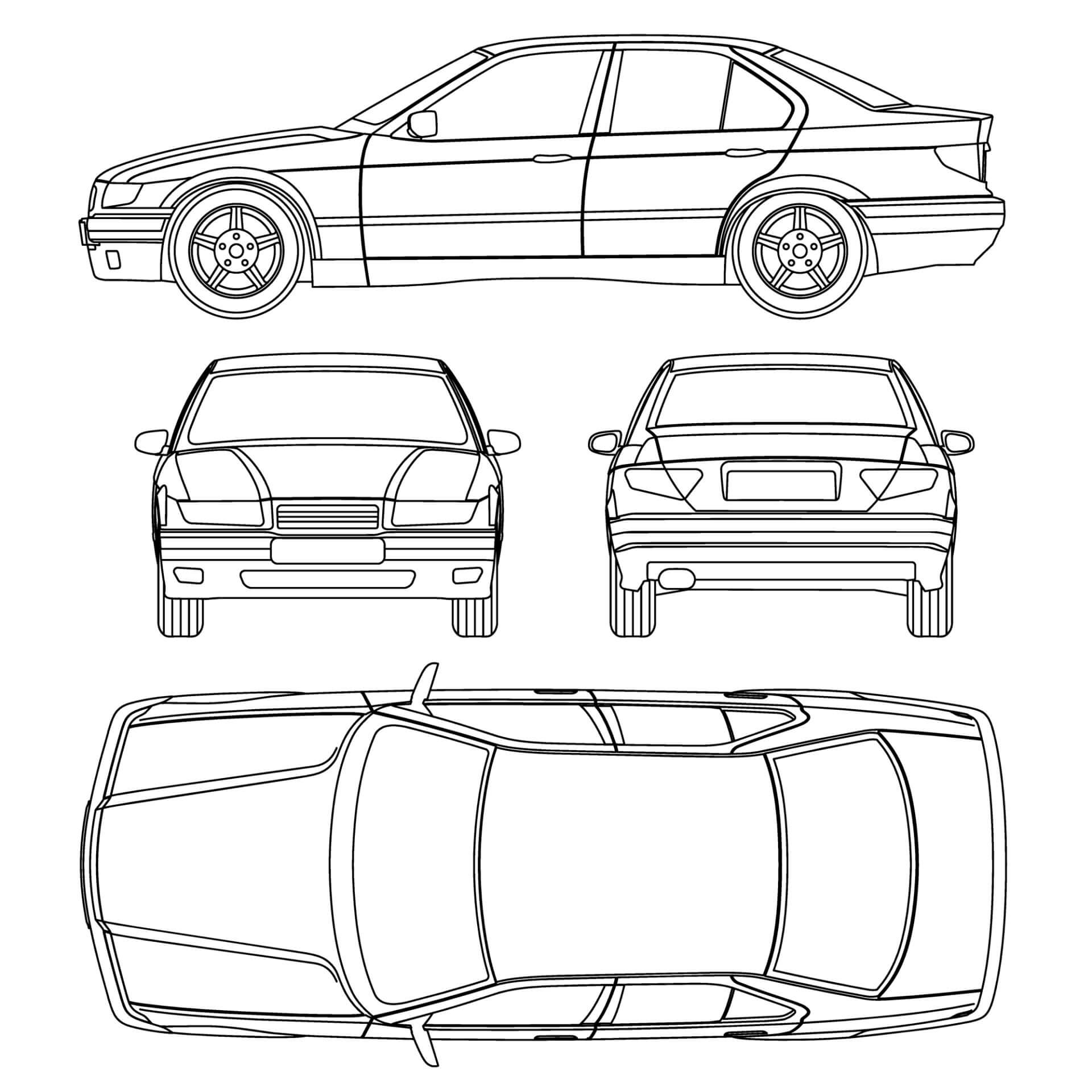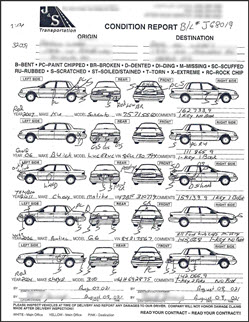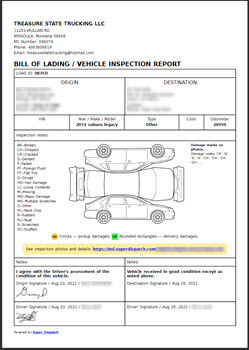The vehicle condition report and bill of lading (aka BOL) are very important documents when shipping a car. In fact, they’re the only documents required when shipping a car.
Simply put, the vehicle condition report is a document that details the condition of the vehicle being transported. It is ultimately used to determine if damage occurred to the vehicle during the transport. The bill of lading is a receipt, or invoice, for the shipment.
Here’s a quick overview of how the vehicle condition report comes into play during an auto transport:
At Pick Up
- Driver inspects the exterior of the vehicle
- Driver generates vehicle condition report (paper or digital)
- Driver and pick up person sign the report
- Pick up person given a copy of the report (if digital, a copy is emailed)
- Driver loads the vehicle
(driver heads out)
At Delivery
- Driver unloads the vehicle
- Delivery person reviews report & inspects the vehicle
- Delivery person notes any damage on the report
- Driver and delivery person sign the report
- Delivery person given a copy of the report (if digital, a copy is emailed)
(transport official ends)
At Pick Up
When a driver shows up to pick up your car for transporting, he’s going to do an exterior inspection of the vehicle. He’s going to make notes on the vehicle condition report of any pre-existing scratches, dents, and damage. The driver will usually take photos of the vehicle as well to include in the report.
Side Note on Photos: We strongly recommend our customers take their own photos regardless if the driver does or not. You can never have enough photos. They can only help to settle any potential disputes if damage does occur during the transport.
The driver should also record the odometer reading on the report. If he doesn’t, we highly recommend you tell the driver to put it on the report!
After the driver’s inspection and report are completed, he will sign it and so will the pick up person.
The pick up person should receive a copy of the report. If one isn’t automatically provided, the pick up person should request a copy from the driver. If it’s a digital report, a copy will be sent via email.
After all that is done, the driver will load the vehicle and be on his way.
At Delivery
When the driver delivers the vehicle, he’ll unload it and then give the vehicle condition report to the delivery person. The delivery person will then have time to review the report and inspect the vehicle.
The delivery person is inspecting the vehicle to ensure the condition of the exterior of the vehicle matches what’s on the report. If there is any damage to the vehicle not indicated on the vehicle condition report, then we know the vehicle was damaged during the transport. If there is damage, it is noted on the vehicle condition report.
Once the inspection is completed, the driver and the delivery person signs the report. The delivery person will then retain a copy of the signed vehicle condition report. If it’s a digital report, a copy will be sent via email.
If there is damage done to the vehicle during the transport, then a damage claim will be filed by the customer as per our damage claim policy.
As you can see, the vehicle condition report is a critical document when shipping a car. Without it, we’d never be able to determine if damage was pre-existing, or if it occurred during the transport.
What Does the Vehicle Condition Report Look Like?
Up until recently, all vehicle condition reports were written manually on paper. Today, most reports are digital only, but many carriers still use old-school paper reports. When you ship a car today, you’ll see either a paper or digital report.
Here is an example of an “old-school” paper vehicle condition report (this one has multiple vehicles listed on the report):
Click image to see full report.
What About the Bill of Lading (BOL)?
A bill of lading (or BOL) is a receipt, or invoice, used when shipping freight. Sometimes carriers use two separate documents. They’ll have a separate vehicle condition report and a separate bill of lading. When they are separate documents, the customer will usually get a copy of the vehicle condition report and the auto transport broker will get a copy of the bill of lading.
Many carriers combine these documents into one so you’ll have a, “Bill of Lading/Vehicle Condition Report.” Here is an example of one:
Click image to see full report.
In this instance, the customer will get a copy of a report that will technically be called the, “Bill of Lading/Vehicle Inspection Report.”
You’ll note this report can be titled different names including:
- Vehicle Condition Report
- Condition Report
- Vehicle Inspection Report
- Bill of Lading
- Bill of Lading/Vehicle Inspection Report
Regardless of how the report it titled, the important thing to remember is that when a car is shipped, the condition of the vehicle is noted on a report, and both the pick up and delivery person will sign the report and get a copy. The report is what you get as a receipt for the transport and it’s what we use to determine if damage occurred during the transport.



